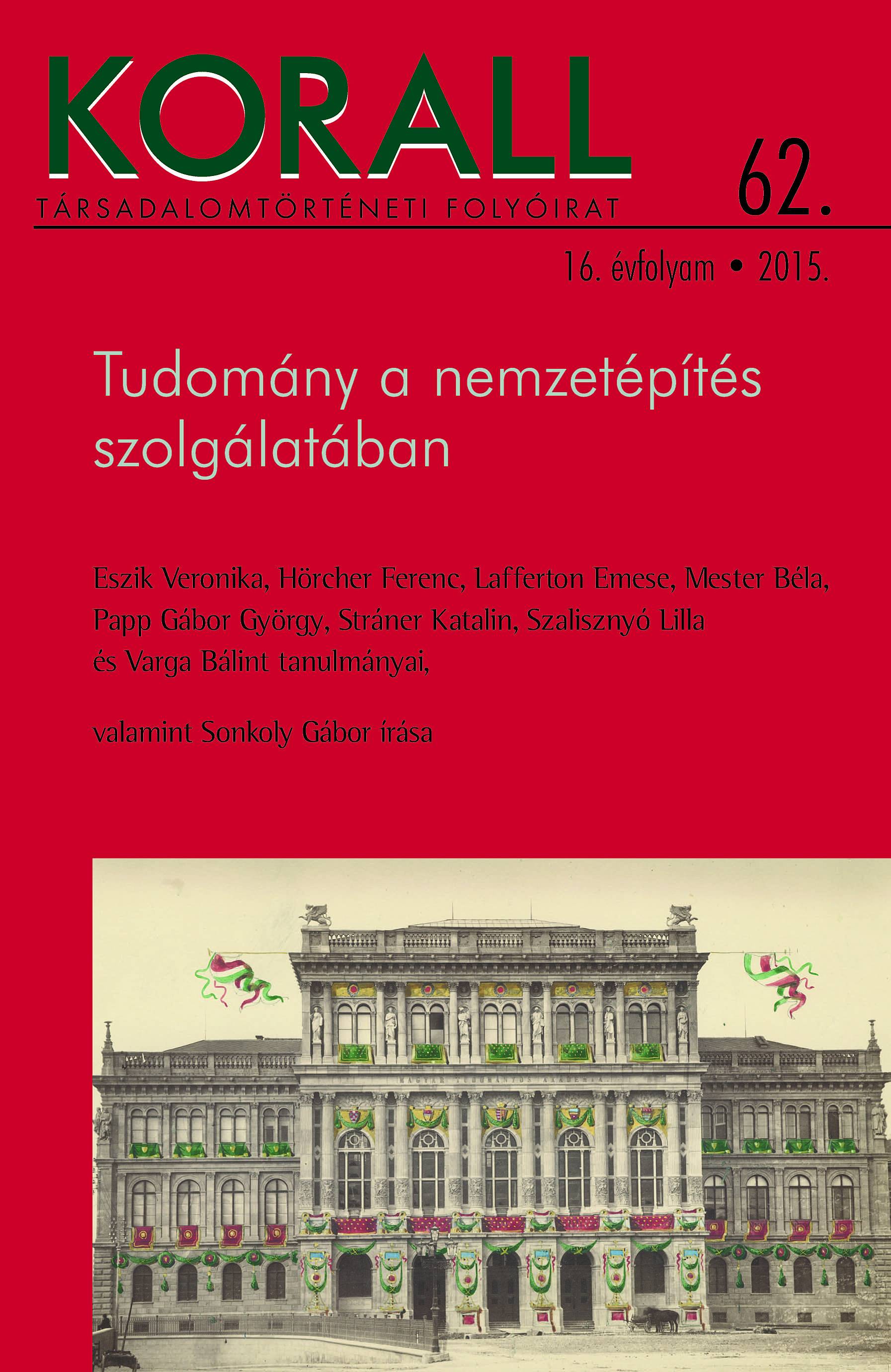„Vezessük be minél előbb nemzeti hagyományainkat a modern világba”
“Let us Take our National Traditions to the Modern World as Soon as Possible”
Changes in the Concept of National Architecture in Hungarian Architectural Literature
Author(s): Gábor György PappSubject(s): History, Cultural history, History of ideas, Political history, 19th Century
Published by: KORALL Társadalomtörténeti Egyesület
Keywords: history of architecture; Ödön Lechner; national architecture
Summary/Abstract: The study aims to demonstrate the changes in the role and place of, as well as the ensuing discourse about national architecture in the period between the 1870s and the 1910s. Architecture occupies a special place in the discourse about national character. On one hand, due to its technical background and constructive approach, it was in the focus of attention from the field of engineering. On the other hand, its aesthetical aspects, as well as the fact that architectural works are often projects of co-operation between diverse art forms, also made it relevant for practitioners of the fine arts’ various branches. At the beginning of this period, the establishment of national art and architecture was closely connected to concepts of national identity and sovereignty. The prevailing discourses of the time gave rise to the long-standing idea that no specific architectural style can be associated with Hungarian history and consequently national architecture must be constructed creatively out of various disparate sources. In the latter quarter of the century, architects considered the question of national architecture as relevant and topical and worked on the complex description of the concept of nation in architecture as a whole. Self-imaging and self-reflection played an important role in the creation of national character. Later, when identity building was no longer a national mission, the choice of historical styles was determined by the specifics of architectural projects and functions rather than their purpose to represent symbolic meaning. The fin-desiècle practice of borrowing features of surviving architectural monuments led to invention deficit in some cases. This strict adherence to historic models suggests a certain level of uncertainty, which is also visible in the efforts (not unlike similar attempts elsewhere in Europe) to find new models outside the context of the history of European architecture.
Journal: Korall - Társadalomtörténeti folyóirat
- Issue Year: 2015
- Issue No: 62
- Page Range: 167-189
- Page Count: 23
- Language: Hungarian

